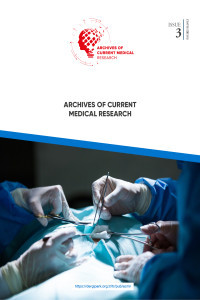Something is still wrong: Epinephrine use in venom immunotherapy patients
Something is still wrong: Epinephrine use in venom immunotherapy patients
Anaphylaxis, Venom Allergy, Adrenaline auto Injector.,
___
- 1. Pumphrey RS. Lessons for management of anaphylaxis from a study of fatal reactions. Clin Exp Allergy. 2000;30(8):1144–50.
- 2. Pumphrey RS, Gowland MH. Further fatal allergic reactions to food in the United Kingdom, 1999–2006. J Allergy Clin Immunol. 2007;119(4):1018–9.
- 3. Sampson HA, Mendelson L, Rosen JP. Fatal and near-fatal anaphylactic reactions to food in children and adolescents. N Engl J Med. 1992;327(6):380–4.
- 4. Simons KJ, Simons FE. Epinephrine and its use in anaphylaxis: current issues. Curr Opin Allergy Clin Immunol. 2010;10(4):354–61.
- 5. Sheikh A, Ten Broek V, Brown SG, Simons FE. H1-antihistamines for the treatment of anaphylaxis: Cochrane systematic review. Allergy. 2007;62(8):830–7.
- 6. Sheikh A, Shehata YA, Brown SG, Simons FE. Adrenaline for the treatment of anaphylaxis: cochrane systematic review. Allergy. 2009;64(2):204–12.
- 7. Simons FE. Pharmacologic treatment of anaphylaxis: can the evidence base be strengthened? Curr Opin Allergy Clin Immunol. 2010;10(4):384–93.
- 8. Sampson HA, Munoz-Furlong A, Campbell RL, Adkinson NF, Jr., Bock SA, Branum A, et al. Second symposium on the definition and management of anaphylaxis: summary report--Second National Institute of Allergy and Infectious Disease/Food Allergy and Anaphylaxis Network symposium. J Allergy Clin Immunol. 2006;117(2):391–7.
- 9. Graif Y, Romano-Zelekha O, Livne I, Green MS, Shohat T. Allergic reactions to insect stings: results from a national survey of 10,000 junior high school children in Israel. J Allergy Clin Immunol. 2006;117(6):1435–9.
- 10. Bilo BM, Bonifazi F. Epidemiology of insect-venom anaphylaxis. Curr Opin Allergy Clin Immunol. 2008;8(4):330–7.
- 11. Graft DF. Insect sting allergy. Med Clin North Am. 2006;90(1):211–32.
- 12. Prince BT, Mikhail I, Stukus DR. Underuse of epinephrine for the treatment of anaphylaxis: missed opportunities. J Asthma Allergy. 2018;11:143–51.
- 13. Cohen MB, Saunders SS, Wise SK, Nassif S, Platt MP. Pitfalls in the use of epinephrine for anaphylaxis: patient and provider opportunities for improvement. Int Forum Allergy Rhinol. 2017;7(3):276–86.
- 14. Labella M, Garcia-Neuer M, Castells M. Application of precision medicine to the treatment of anaphylaxis. Curr Opin Allergy Clin Immunol. 2018;18(3):190–7.
- 15. Lee S, Bellolio MF, Hess EP, Erwin P, Murad MH, Campbell RL. Time of Onset and Predictors of Biphasic Anaphylactic Reactions: A Systematic Review and Meta-analysis. J Allergy Clin Immunol Pract. 2015;3(3):408–16 e1–2.
- 16. Simons FE, Ardusso LR, Bilo MB, Cardona V, Ebisawa M, El-Gamal YM, et al. International consensus on (ICON) anaphylaxis. World Allergy Organ J. 2014;7(1):9.
- 17. Adib-Tezer H, Bayerl C. Honeybee and wasp venom allergy: Sensitization and immunotherapy. J Dtsch Dermatol Ges. 2018;16(10):1228–47.
- 18. Bilo MB, Pravettoni V, Bignardi D, Bonadonna P, Mauro M, Novembre E, et al. Hymenoptera Venom Allergy: Management of Children and Adults in Clinical Practice. J Investig Allergol Clin Immunol. 2019;29(3):180–205.
- 19. Fleischer DM, Perry TT, Atkins D, Wood RA, Burks AW, Jones SM, et al. Allergic reactions to foods in preschool-aged children in a prospective observational food allergy study. Pediatrics. 2012;130(1):e25–32.
- 20. Esenboga S, Kahveci M, Cetinkaya PG, Sahiner UM, Soyer O, Buyuktiryaki B, et al. Physicians prescribe adrenaline auto-injectors, do parents use them when needed? Allergol Immunopathol (Madr). 2020;48(1):3–7.
- 21. Alqurashi W, Stiell I, Chan K, Neto G, Alsadoon A, Wells G. Epidemiology and clinical predictors of biphasic reactions in children with anaphylaxis. Ann Allergy Asthma Immunol. 2015;115(3):217–23 e2.
- 22. Lieberman P. Biphasic anaphylactic reactions. Ann Allergy Asthma Immunol. 2005;95(3):217–26; quiz 26, 58.
- 23. Jarvinen KM, Sicherer SH, Sampson HA, Nowak-Wegrzyn A. Use of multiple doses of epinephrine in food-induced anaphylaxis in children. J Allergy Clin Immunol. 2008;122(1):133–8.
- 24. Campbell RL, Bashore CJ, Lee S, Bellamkonda VR, Li JT, Hagan JB, et al. Predictors of Repeat Epinephrine Administration for Emergency Department Patients with Anaphylaxis. J Allergy Clin Immunol Pract. 2015;3(4):576–84.
- 25. Song TT, Brown D, Karjalainen M, Lehnigk U, Lieberman P. Value of a Second Dose of Epinephrine During Anaphylaxis: A Patient/ Caregiver Survey. J Allergy Clin Immunol Pract. 2018;6(5):1559–67.
- 26. Frew AJ. What are the ‘ideal’ features of an adrenaline (epinephrine) auto-injector in the treatment of anaphylaxis? Allergy. 2011;66(1):15– 24.
- 27. Anchor J, Settipane RA. Appropriate use of epinephrine in anaphylaxis. Am J Emerg Med. 2004;22(6):488–90.
- 28. Greenberger PA, Rotskoff BD, Lifschultz B. Fatal anaphylaxis: postmortem findings and associated comorbid diseases. Ann Allergy Asthma Immunol. 2007;98(3):252–7.
- Yayın Aralığı: Yılda 3 Sayı
- Başlangıç: 2020
- Yayıncı: 14 Mart Tıbbiyeliler Derneği
Alim Can BAYMURAT, Mesut TAHTA, Nazmi UYSAL
Muhammed Çağatay ENGİN, Mehmet KÖSE, Serdar TOY, Mehmet Cenk TURGUT
Predictive role of NLR, SII, and PLR in COVID-19 patient mortality and disease severity
Ayşegül İnci SEZEN, Kadriye KART YAŞAR
Prognostic factors after pneumonectomy in non-small cell lung cancer
Cemal AKER, Celal Buğra SEZEN, Mustafa Vedat DOĞRU, Ali Murat AKÇIL, Umut KİLİMCİ, Semih ERDUHAN, Levent CANSEVER, Muzaffer METİN
Something is still wrong: Epinephrine use in venom immunotherapy patients
Gökhan AYTEKİN, Fatih ÇÖLKESEN, Eray YILDIZ, Şevket ARSLAN, Ahmet ÇALIŞKANER
Patients with third degree burns in an emergency department
Tamer DURDU, Ahmet Burak ERDEM, Elif ÇELİKEL, Selahattin GÜRÜ, Alp ŞENER
Mustafa YERLİ, Ali YÜCE, Tahsin Olgun BAYRAKTAR, Niyazi İĞDE, Bulent KARSLIOGLU, Nazım ERKURT, Mustafa Buğra AYAZ, Süleyman Semih DEDEOĞLU, Yunus İMREN, Hakan GÜRBÜZ
Telemedicine/telehealth in Preventive Medicine
Burçin YILDIRIM, Muhammed Mustafa UZAN, Memet Taşkın EGİCİ
Mustafa Vedat DOĞRU, Celal Buğra SEZEN, Cemal AKER, Fatma TOKGÖZ AKYIL, Muzaffer METİN
Evaluation of patients who received erythrocyte transfusion in the emergency department
